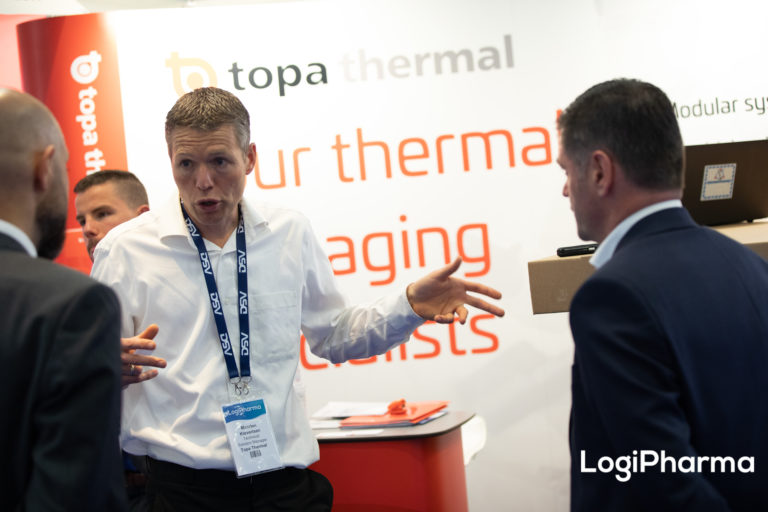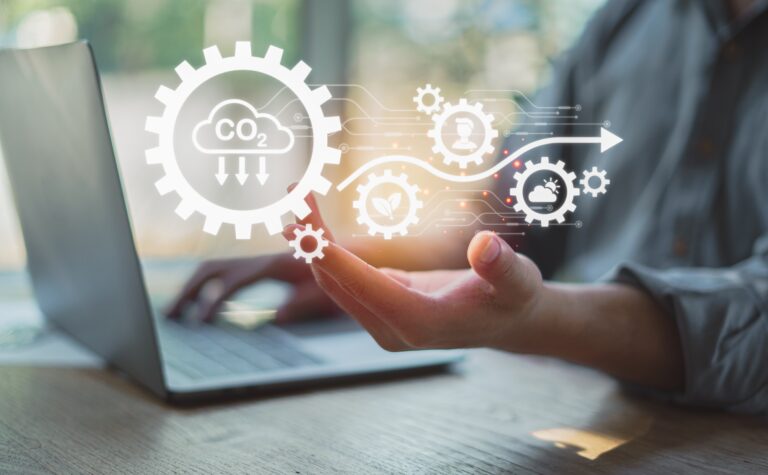Sustainability in the Pharma Cold Chain
Driving Sustainability in Cold Chain Logistics: Leveraging Lane Risk Analysis for CO2 Reduction
As the quality of airfreight logistics for pharmaceuticals improves, the ambient temperature to which temperature-sensitive products and their thermal packaging are exposed becomes less extreme.
Extensive lane risk analysis tools can now be used to assess and formulate optimal pharma shipping routes, to assure safe delivery of temperature sensitive biopharma products, and ensure product integrity. These lane risk analysis tools evaluate the possible temperature risk exposure of a shipment and even use predictive weather data.
With the advancement of these tools it is therefore important to reconsider the thermal packaging solutions you use. Do you truly still need high-quality rental containers or heavy, battery-powered options? These traditional shipping containers may now be over-engineered for their purpose.
In addition, the air cargo sector plays a crucial role in the global effort to reduce CO2 emissions. As it strives towards achieving net-zero emissions by 2050, transitioning to sustainable aviation fuels is becoming a central focus. It is therefore worth noting that current multi-use thermal packaging solutions are often shipped back empty. This insight should prompt a rethink of the efficiency of re-usable containers and their environmental impact.
New, optimised thermal packaging systems, for example, that are compact, or can be flat-packed, have greater capacity and utilise lighter, eco-friendly materials, along with sustainable water-based refrigerants for cooling, can significantly reduce CO2 emissions.
At Topa Thermal, our expert technical solutions team can assess your distribution process, taking a total cost of ownership perspective. We specialise in creating fully optimised thermal packaging solutions that not only enhance efficiency but also contribute to significant CO2 reduction.
How to Optimise Thermal Shipping Solutions for a more Sustainable Pharma Cold Chain
1. Perform a Lane Risk Analysis
Conducting a lane risk assessment is crucial to comprehensively understand the desired “quality level” of the thermal packaging. This assessment enables us to identify optimal routes, evaluate potential risks, and ensure that the final packaging solution aligns with all distribution requirements. Indeed, the world of thermal packaging can sometimes be over-engineered:
Over-Qualification: Packaging solutions often undergo rigorous testing and qualification, providing product protection for up to 200 hours under specific ambient temperatures. However, this level of protection may exceed actual requirements.
IATA Airfreight Code: When booking a shipping system, it is also common to use the IATA airfreight code for COL (cool storage). This code corresponds to transport temperature range service of +2°C to +8°C.
Storage Mismatch: Interestingly, the qualified product/packaging combination, designed to withstand much higher ambient temperatures, is often stored at the product temperature during most logistics steps.
Based on our analysis of real shipment data, we have observed that packaging systems are exposed to “uncontrolled” temperatures during intercontinental shipments for approximately 30 hours. Conducting a thorough lane risk analysis allows us to assess the specific thermal protection requirements, streamline your logistics process, and avoid unnecessary over-engineering and over-qualification of the thermal packaging system.
Reevaluating packaging efficiency and aligning it with actual needs can lead to more effective and sustainable solutions.
2. Reduce the Weight and Size of Packaging
To reduce the weight of the thermal shipping container, consider the following strategies tailored to enhance product protection in the shipping lane:
Opt for Lightweight Pallets: Select pallets made from lightweight materials. These pallets contribute to overall weight reduction, making the entire shipping system more efficient.
Thinner Insulation: Use insulation materials with reduced thickness. By maintaining thermal integrity while minimising bulk, you achieve weight savings without compromising product safety.
Refrigerant Reduction: Evaluate the refrigerant requirements carefully. Minimise excess refrigerants to decrease the overall weight of the container.
3. Use More Sustainable Insulated Materials & Coolants
The most commonly used insulated materials today include EPS (expanded polystyrene), PUR (polyurethane), and VIP (vacuum insulation panels). These materials provide increasing R-insulation values, but there’s a trade-off: as the R-value increases, so does the CO2 footprint associated with their production.
However, exciting developments are underway. New insulation materials are emerging, characterised by being lightweight, robust, and made from sustainable, bio-based sources. Companies like Topa are actively designing distribution systems that prioritise sustainability for temperature-controlled pharmaceutical shipping.
Coolants – Balancing Efficiency and Environmental Impact: Many insulated shipping systems rely on phase change materials (PCMs) as coolants. Unfortunately, some PCMs have a significant CO2 footprint, especially when compared to the best PCM option: water.
Potential alternatives include:
Water Revival: Could we see a resurgence in using water as a refrigerant? Its low environmental impact makes it an attractive option.
Dry Ice from Waste Streams: Another possibility is utilizing dry ice, which can be derived from waste streams. This approach aligns with sustainability goals.
CO2 Extraction for Dry Ice: Researchers are even investigating ways to extract CO2 from ambient air for dry ice production. This innovative method could further reduce environmental impact.
Lastly, consider the packaging of these coolants. Should they be in the form of a gel pack, hard shell bottle, foam brick, or something else? A comprehensive life cycle analysis will help evaluate the different options and guide sustainable choices.
4. Optimise Aircraft Loading
A huge improvement in efficiency and CO2 reduction can come from optimising the filling rate of an aircraft.
A) Maximize ULD Capacity:
- Begin by maximizing the use of available space on an airline sheet or Unit Loading Device (ULD). These containers play a crucial role in cargo transportation.
- ULD efficiency tools, such as Speedcargo, can guide you in configuring the highest ULD fill rate for your specific load. By strategically arranging cargo within the ULD, you can make the most of its capacity.
B) Utilise Wasted Space:
- To achieve even higher fill rates, consider utilizing the wasted space within a ULD. Often, there are gaps or unused areas that can be optimized.
- An impressive example is the ULD optimizer developed by Topa Thermal. This innovative solution leverages the extra space around the ULD, which is typically left free for attaching netting locks.
- With this approach, a 120% fill rate can be achieved, pushing the boundaries of efficiency and sustainability.
5. Evaluate Single use vs Multi use
The environmental impact of incorporating a re-use option into your logistics strategy is multifaceted and context-dependent. Reverse logistics, which involves managing the return of goods, can be intricate. When assessing CO2 footprint, it’s essential to compare the benefits of re-use with those of recycling at the destination.
Conclusion: Conducting lane risk analysis is crucial for understanding cold chain logistics and minimising environmental impact. Leveraging logistics advancements and optimising thermal packaging can lead to lighter, more efficient systems with significant CO2 benefits.
However, comparing CO2 impact across different thermal packaging solutions remains challenging. To make accurate comparisons, consider shipping lane details, payload, and packaging type. Evaluating material, dimensions, weight, and recycling potential is essential. Only then can we drive continuous improvement and innovation in reducing CO2 emissions.
Maarten Kleverlaan, Technical Solution Manager at Topa Thermal draws upon over 20 years of experience in packaging design and development. Maarten’s expertise spans from package design to last-mile delivery, focusing on reducing CO2 impact, optimising thermal packaging to minimize waste and cost, and testing and validating for total cost of ownership


